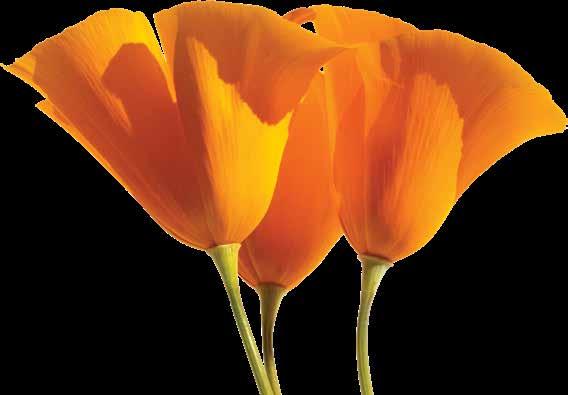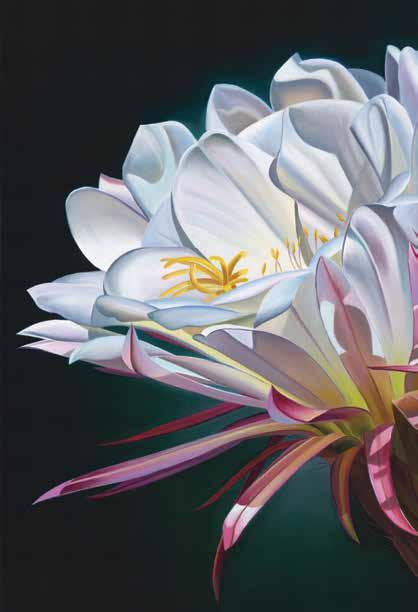Nature
Desert Blooms The Ever-Changing Tapestry of the Seasonal Flower Show
Text by Matthew B. Johnson, Program Manager and Curator | Desert Legume Program Artwork by Dyana Hesson & Faith Garvie
Sonoran Desert can appear harsh and forbidding. Yet it is a place filled with life. Months of intense heat and harsh sunlight without any rain turn the ubiquitous creosote bushes a somber brown. Many trees and shrubs lose some or all of their leaves. Saguaro cacti assume a gaunt presence. Prickly pear cactus segments become thin and may appear wilted. But these and other perennial plants, and the seeds of ephemerals are waiting for the proper conditions to return. Rainfall is the key. In years when sufficient rain falls a bewildering variety of wildflowers appear, sometimes covering the ground with carpets of color.
ARIZONA'S
Unlike most dry regions, much of the Sonoran Desert has two distinct rainy seasons. One rainy season occurs during the cooler months, and the other occurs during the heat of summer. There are suites of plants that are adapted to grow and flower during one or the other of these seasons, and some that are opportunists, able to capitalize on rain whenever it might fall. Many of the long-lived perennial plants including cacti and various desert trees and shrubs will flower even in dry years. Other plants, especially ephemeral wildflowers, depend on specific timing and sufficient amounts of rain before they will germinate and flower. With adequate rainfall, there will almost always be something in flower at any time of year. In addition to preserving many acres of rich Sonoran Desert vegetation, the Boyce Thompson Arboretum features a wide diversity of plants from dry regions across the globe. Each of these plants can add to the ever-changing tapestry of the seasonal flower show. This makes the Arboretum a premier destination to see desert plants in flower at any time of year. If autumn rains materialize, we can be treated to a fiesta of color beginning in February or even January in mild years.
Among the native plants, the bright yellow of brittlebush flowers and the delicate pink of fairy duster flowers are joined by bladderpod mustard, Mexican gold poppy, lupin, mallow, desert chia, desert chicory, and a host of other ephemeral plants that contribute to the beauty of spring wildflower displays. Perennials such as penstemon, chuparosa, larkspur, desert zinnia, paperflower, desert





